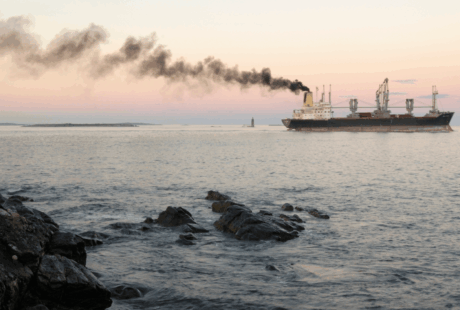As the International Maritime Organization (IMO) prepares to meet in London from 31 March to 11 April to finalise measures for its greenhouse gas (GHG) strategy, a new report by marine NGO Seas At Risk shows the significant economic and climate benefits of using wind-assisted propulsion to power global shipping.
The ‘Wind First!’ study shows that retrofitting sails on large, existing vessels can save close to half a million US dollars on fuel costs, and reduce fuel consumption and carbon emissions by up to 12%, annually.
This makes wind-assisted propulsion–which is readily available and scalable today–a critical tool to bridge the 2030 target of 5% zero and near zero-emission energy uptake in the IMO GHG Strategy. In fact, if wind sails were integrated into the global shipping fleet, the energy savings gained would kick-start GHG reductions, reduce the immediate need for e-fuels production and allow for the market to mature more gradually, avoiding shocks.
The IMO’s 176 member states need to agree on robust climate policies this year, with wind as a central solution, including a $150 carbon levy, a Fuels Standard that rewards wind-assisted propulsion use, and improved energy efficiency framework (CII).
Sian Prior, Shipping Policy Director at Seas At Risk, said:
“The upcoming IMO discussions are pivotal in shipping’s decarbonisation transition and wind must be central to the solution. It is a proven, readily available and cost-effective technology that can help the global fleet meet the IMO’s 2030 energy targets and will only become more valuable as fuel costs are set to quadruple by 2040 with the shift to e-fuels. Scaling up wind-assisted really is a no-brainer: it’s a practical, climate-neutral and cost-effective solution that’s ready to deploy.”
Anaïs Rios, Shipping Policy Officer at Seas At Risk, said:
“Installing wind-assisted propulsion to the global shipping fleet is a win-win-win for businesses, the economy and the planet – delivering lower costs for the shipping sector, a smoother energy transition for global trade, and an immediate cut in emissions. Wind technology is ready and available now, and it must be recognised at the IMO as a necessary bridge towards sustainable, clean shipping. The clock is ticking! Wind first! Wind now!”
In 2023, the IMO adopted a Revised GHG Strategy to reach zero emissions by 2050 with targets along the way: 30% by 2030 and 80% by 2040, as well as a 5% goal of zero/near-zero emission energy uptake by 2030. Governments are now in negotiations on measures to deliver these targets.
Global policies, such as those adopted at the IMO, are necessary to provide market incentives for companies to scale up investments in zero-emission fuels and technologies, and to meet the IMO’s climate commitment.
Notes:
The IMO’s 176 states are in the process of finalising measures to deliver the IMO’s Revised Strategy. Governments will meet again for a two-part summit: ISWG-GHG-19 on 31 March – 1 April (technical working group talks) and on 7-11 April (MEPC 83).
The policies on the table are: incentivising alternative fuels and technologies under the Global Fuels Standard (GFS); setting a universal carbon levy; and strengthening shipping’s energy efficiency under the Carbon Intensity Index (CII).
SAR calls on governments to ensure climate ambition across the IMO policies, with wind at the centre:
● Carbon levy: adopt a levy of at least $150 with equitable revenue distribution and dedicated funding for the development and uptake of wind-assisted propulsion.
● Energy efficiency: align the existing Carbon Intensity Indicator (CII) with the IMO’s Revised Strategy goals to drive emission reduction.
● Fuels standard: reward the use of wind-assisted technologies under the Global Fuels Standard (GFS) to incentivise their uptake
Read out executive summary here

Posted on: 27 March 2025

